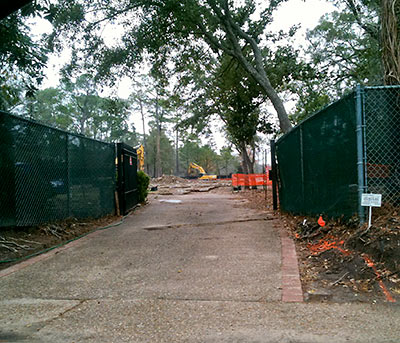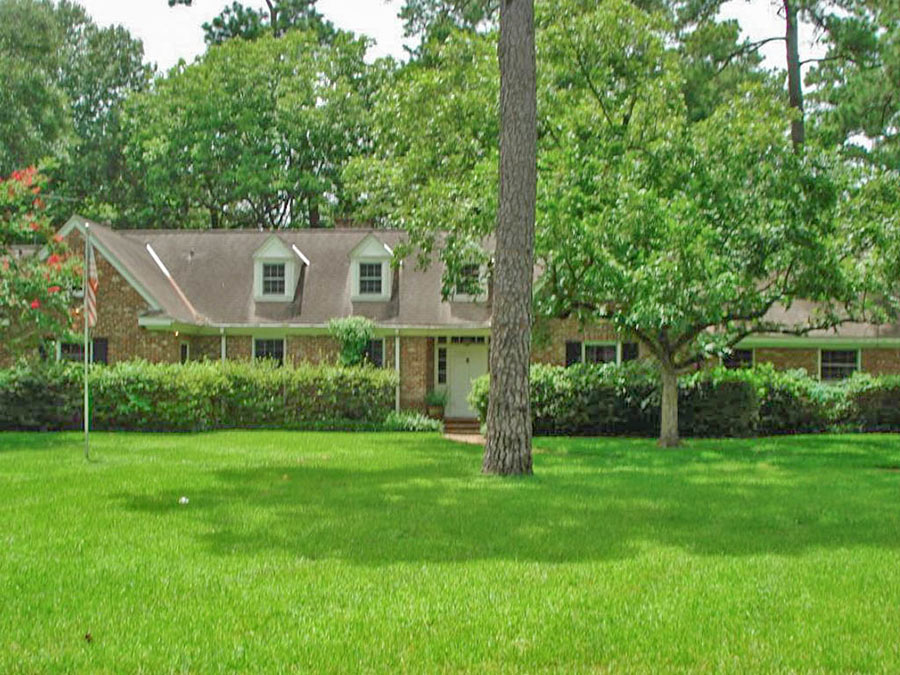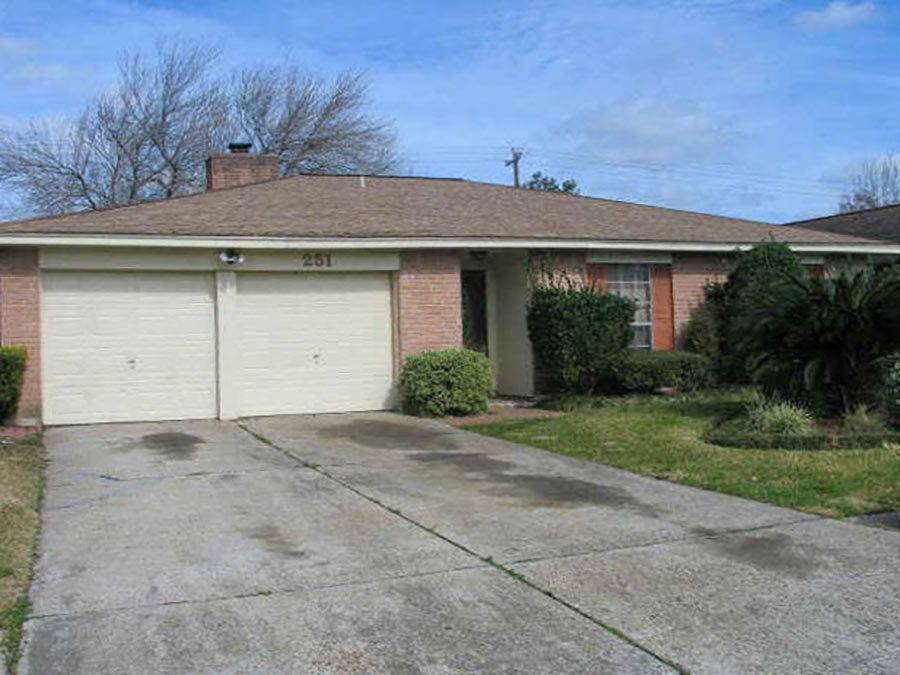
A few months after Harold Farb passed away in 2006, the unfinished home at 3482 Inwood Dr. the legendary singer and Houston developer had been building with his wife, Diane Lokey Farb, went on the market for $14.75 million. The listing didn’t include any photos, but described a 17,404-sq.-ft. “Neoclassical gated estate” on an almost-2-acre lot, with 8 fireplaces, 9 bathrooms, an elevator, a 4-car garage, and a master suite overlooking the 15th tee of the golf course at the River Oaks Country Club. The home was “to be completed by new owner.” Only portions of the exterior were finished. By July of last year the price had been chopped to $9.995 million, after a few years of steady price reductions and listing-number changes. (It appears Farb bought the property from its previous owner, Roy Cullen, for about half that amount.) Not too long after the listing expired, the home showed up on Swamplot’s Daily Demolition Report. But the demo action didn’t begin until recently. A Swamplot reader sends us this view of some heavy equipment still on the scene, behind a fence that just went up last weekend.
- Previously on Swamplot: Last of the Harold Farb Signs: It’s a Wrap, Farb Gone: Will the Signs Go Down on Broadway?
Photo: Swamplot inbox





Ah, Harold….wonderful story from a band member backing him in the Carlyle Room days –
during a break, someone came up, tapped one of them on the shoulder, gestured toward the stage and said ” That was the weirdest thing I’ve ever seen!” Quite a telling comment considering it was Frank Zappa, in town and playing at the Summit, who made it.
From Hellsing:
Ah, Harold….wonderful story from a band member backing him in the Carlyle Room days –
during a break, someone came up, tapped one of them on the shoulder, gestured toward the stage and said †That was the weirdest thing I’ve ever seen!†Quite a telling comment considering it was Frank Zappa, in town and playing at the Summit, who made it.
_________________
That is soooooo mean. And soooooo funny.
As for the house regardless of what stage of “non-completion it was in, no doubt it will set a record for the most expensive teardown in town. Guess no one liked the floor plan?
Carolyn Farb got 20m back in the 1980s – I think Harold got a bargain.
Good ‘ol Harold – a true Houstonian.
Optimism and action.
Not many left like him.
true Houstonians built hospitals like MD Anderson, were faceless members of Shriners and raised money for Texas Children’s Hospital, donated land for Hermann Park, donated buildings for the arts and raise money to keep all these things going for the use of all Houstonians. Harold was far from being a developer we should hold up to others as an example we would want to see future leaders of real estate aspire to. The man built enormous apartment communities that far outlived the useful nature of these projects and then became unkept eyesores in the areas they were left to rot in so his company could collect rent. His legacy is the legacy of limited vision and singular dreams spent chasing a strange singing career or a new trophy wife. His donations to some of our charities here in town pale in comparison to what others with his means have done with their fortune and now we have the joy of watching his family voice their tabloid ideas about his death on the news lately. Farb benefited from his families businesses and the land they owned for generations helped finance an easy idea, build a rental and live off the money. In todays world we should expect more since it is a great responsibility to be a landlord and a much bigger one when you are seen as a developer in a major city. Hopefully we will not see the return of developments that ignore the community they occupy because in the end it is more successful to aim for harmony and innovation when building large scale real estate projects.
It’s easy to view Harold Farb as one of the bad guys – Charles – a major contributor to the massive overbuilding of apartments in Houston in the 1960s through early ’80s (and especially the ’70s and early ’80s); an overbuilding that continues to have negative impacts around the City to this day.
.
But in many regards it wasn’t Farb who did it, so much as his followers: the second and third-rate apartment developers who didn’t put nearly as much care into what they built as Harold Farb did.
.
Harold Farb developed complexes have, for the most part, withstood the test of time better than the knockoffs from the same period. A lot of the knockoffs have really bad, underlying structural problems that make it hard to justify cleaning them up or renovating. Farb developed complexes usually dont. It makes a big difference.